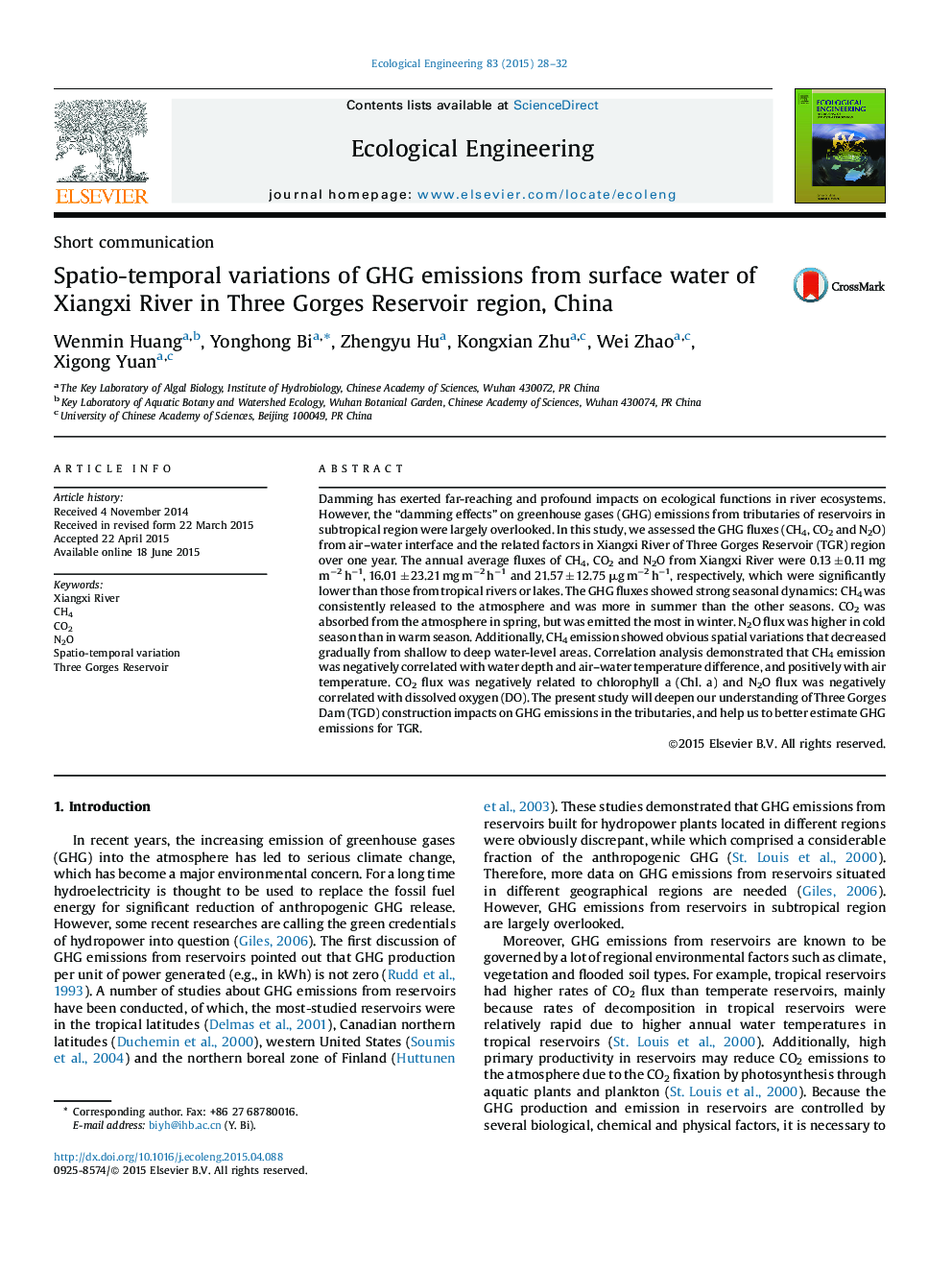| Article ID | Journal | Published Year | Pages | File Type |
|---|---|---|---|---|
| 4388845 | Ecological Engineering | 2015 | 5 Pages |
Damming has exerted far-reaching and profound impacts on ecological functions in river ecosystems. However, the “damming effects” on greenhouse gases (GHG) emissions from tributaries of reservoirs in subtropical region were largely overlooked. In this study, we assessed the GHG fluxes (CH4, CO2 and N2O) from air–water interface and the related factors in Xiangxi River of Three Gorges Reservoir (TGR) region over one year. The annual average fluxes of CH4, CO2 and N2O from Xiangxi River were 0.13 ± 0.11 mg m−2 h−1, 16.01 ± 23.21 mg m−2 h−1 and 21.57 ± 12.75 μg m−2 h−1, respectively, which were significantly lower than those from tropical rivers or lakes. The GHG fluxes showed strong seasonal dynamics: CH4 was consistently released to the atmosphere and was more in summer than the other seasons. CO2 was absorbed from the atmosphere in spring, but was emitted the most in winter. N2O flux was higher in cold season than in warm season. Additionally, CH4 emission showed obvious spatial variations that decreased gradually from shallow to deep water-level areas. Correlation analysis demonstrated that CH4 emission was negatively correlated with water depth and air–water temperature difference, and positively with air temperature. CO2 flux was negatively related to chlorophyll a (Chl. a) and N2O flux was negatively correlated with dissolved oxygen (DO). The present study will deepen our understanding of Three Gorges Dam (TGD) construction impacts on GHG emissions in the tributaries, and help us to better estimate GHG emissions for TGR.
